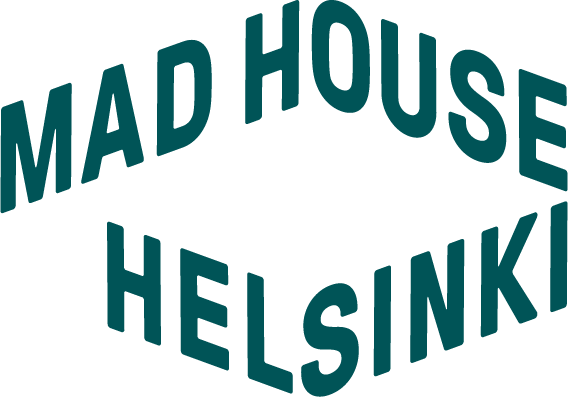Interview with Paria Mohajerani
What if we dream towards the past and not towards the future?
Experience Blurring the Boundaries: Stories on a Revolution by Paria Mohajerani at Vapaan Taiteen Tila, April 3–5, 2025.
Image: Paria Mohajenari
Mad House: Your work is a participatory performance, a playful installation where the audience gets to experience what it would be like to recreate the past. The narrative will be based on the participant's decisions. What path did you take to create such an installation/performance? And what kind of recreations of the past have you been able to create yourself in the narrative shaping?
Paria Mohajerani: This is an interesting question. Recently, I’ve been tracing the roots of my interest in creating participatory LIVE ART experiences. My main question as a performance artist has always been: “Who is my audience?” and “What is their position in the event I am facilitating?” By position, I mean their expectations, their relation to the live art event, their responsibilities, and their level of power.
For me, Live Art is the art of doubling the conditions of Being. To achieve this doubling, I tend to locate the audience as having the same power a subjective body has in everyday life.
Of course, I started working in performing arts as a traditional theatre actor. I think this enthusiasm for creating participatory works also comes from many questions about visibility and temporality rooted in that background.
Participatory or interactive performances have always been challenging. They involve a process of familiarizing the body-mind with a situation one is invited to act in. A good invitation to act requires strategic design and a process of trust-building—and at this point, creating playful events where the rules are transparently described and the purpose is simply to play becomes crucial.
I tend to believe that a less serious approach to arts and the meanings it transforms makes it a more accessible tool for communication—as it is supposed to be (?).
In Blurring The Boundaries: Stories On A Revolution, I am questioning the structures of visibility and temporality, both by inviting the audience to choose their desired pathway into a narrative-building experience. It has always been fun for me to think about my life as if it could have been different—not necessarily better, but just different. I like to put myself in another protagonist's shoes to see how far my imagination can go in these new shoes!
The foundation of our imagination is what we have experienced in life. So building a different narrative starts with letting the “What if…” question lead the process of making a difference.
Nowadays, the most important term for me is fictioning—as a way of setting up further conditions in real life. So it’s important for me to say that I’m trying to use the past as a base for playing together and building a different narrative—one that helps us dare to claim we have alternatives in opposition to any dominant narrative that aims to shape our perception of truth.
MH: You've talked about what is the role of an individual in a collective act, like demonstration. What does it mean to you to be an activist and how to participate as an individual inside a collective? How does this individual and collective experience inform your art?
PM: Thinking about the role of an individual inside a collective has always had two sides in my art. I love reading fiction, and I use fiction and storytelling strategies in my works. In almost all fiction, there is one main protagonist that the story revolves around—them and their decisions. What they choose and how they behave has an impact on each and every aspect of how the story continues.
In some cases, their decisions affect the lives of people in a very far circle from the core concept. And even in some cases, these impacts remain unspoken, as it is not about the protagonist or hero anymore!
Sometimes I think about all the lives around me as fiction, and all people as protagonists of their own lives. Each has a different narrative, and each experiences different consequences based on their decisions and conditions, shaping the truth of their lives. But then there is the question: what is the role of an individual inside a collective? And how could personal decisions affect it on a larger scale?
One of the questions in my work is: ‘How can we call ourselves activists?’, ‘What does a rebel do?’, and ‘How could it be so easy for some of us to think of ourselves as activists?’
I recall my participation in a protest chain in my country. I recall each and every decision I made during the protests and demonstrations, and I remember what actions and decisions I could have made differently—so that they could have brought a different outcome to my personal life, my family members, and my future.
Also, I go further from here, and I try to imagine different conditions for this specific protest chain. Of course, the most important role is being played by an oppressive force that makes you blame or question yourself. While in a more liberal context, you have the chance to blame everything and everyone else—and forgive yourself so easily, which is really nice! But of course, not everyone has the privilege of thinking liberally!
A demonstration, for me, is the most important collective act. Thinking about individuals inside it, and how they can affect it, brings so many storylines and *‘What if…’*s to my mind. I wanted to experience how it could work to have an experience as an individual inside a performance collective about a demonstration collective—and how these layers could affect different outcomes or narratives in the performance!
In this work, I am trying to facilitate an event where we can watch how our personal desires and decision-making could bring different outcomes to a demonstration or revolution. I hope it goes as planned though!

